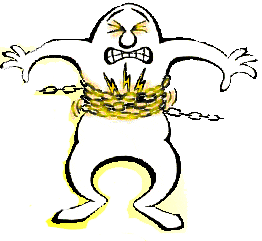Introduction
 The complaint of chest pain is surprisingly common in young children. Because the chest cavity contains many different structures, pinpointing the source of the pain can be quite challenging. Patients (and their parents) are frequently very worried about this common symptom because they know that in adults chest pain often signifies something serious such as a heart attack. Thankfully, true cardiac causes of chest pain are among the least likely reasons for chest pain in pediatric patients.
The complaint of chest pain is surprisingly common in young children. Because the chest cavity contains many different structures, pinpointing the source of the pain can be quite challenging. Patients (and their parents) are frequently very worried about this common symptom because they know that in adults chest pain often signifies something serious such as a heart attack. Thankfully, true cardiac causes of chest pain are among the least likely reasons for chest pain in pediatric patients.
Some of the tests that may be used to evaluate your child’s pain include careful listening with the stethoscope, an electrocardiogram, an echocardiogram and an exercise stress test.
Below we discuss some of the more common reasons for chest pain in young people from most common to least…
Musculoskeletal Chest Pain
This is the most common cause of chest pain in the patients we treat. It may be the result of muscle strain or overuse or (quite often) is simply the manifestation of normal “growing pains”.
In adolescents, symptoms can often follow physical exercise like weight lifting, pushups or school sports, especially if the patient is not used to such activity.
Costochondritis is a term that is used quite often to describe this pain. It is an inflammation of the cartilage connecting the ribs to the sternum. This syndrome is most common in females, and the pain can often be easily reproduced in the office.
This type of pain almost always resolves on its own over time.
Pulmonary Chest Pain
Chest pain originating in the lungs is also quite common and is frequently seen in children under 12 years of age. These cases are often diagnosed with chest x-rays and simple listening with a stethoscope. The three most common sources are asthma, pneumonia and chronic cough. The majority of pulmonary chest pain is made worse with deep breathing or coughing and is often sharp in character; this is called “pleuritic” pain.
Psychological Chest Pain
Psychological causes are next most common and are seen more often in females. Most often the patient has one or more significant life stressors that precede the pain, such as death of a family member, school problems, divorce in the family, fights or problems with peers, abusive or violent families, etc. Hyperventilation also falls into this category of problems.
Gastrointestinal Pain
Pain coming from the GI tract (stomach, intestines, etc) is also seen in children. The most common cause being reflux (sometimes called acid reflux, heartburn or GERD). It is often described as a burning pain in the center of the chest. Symptoms are made worse by different foods, and by body position.
Cardiac Chest Pain
Fortunately, while true cardiac chest pain is one of the more common causes of chest pain in adults, the it is rarely the culprit in children and young adults. Of course, though rare, cardiac causes are important because they may the most dangerous. A history of fainting, palpitations, or a family history of unexplained early deaths all raise suspicion of cardiac problems. The standard tests used enable us to distinguish this from the other forms mentioned above.
